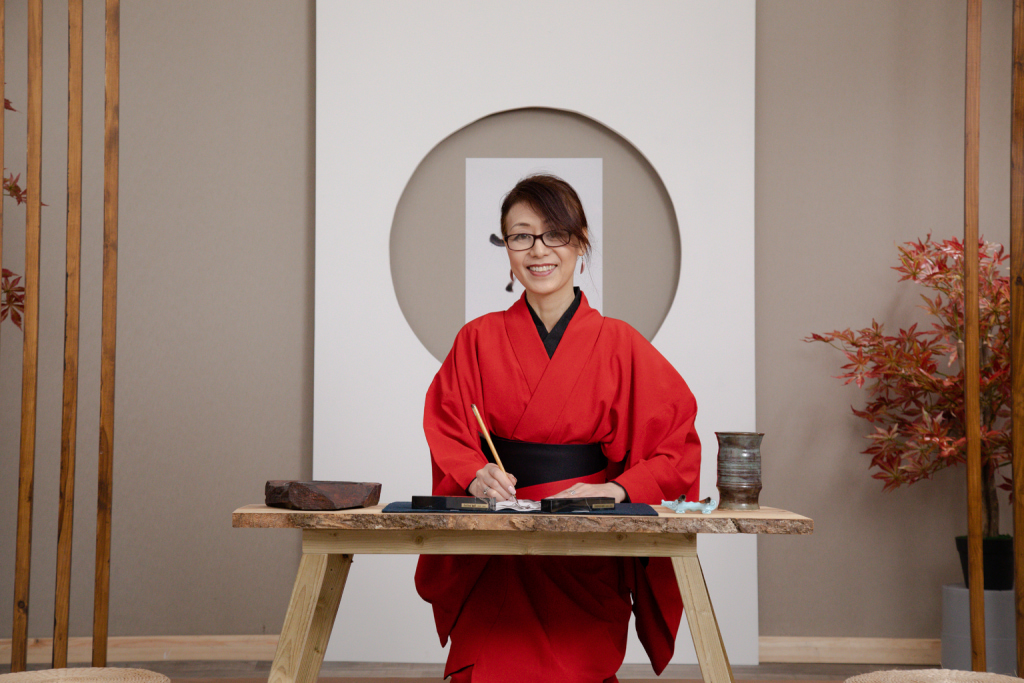Akemi Lucas, who goes by her shodo (calligraphy) master name Koshu, meaning “crimson autumn,” has been living in the UK for over 20 years now. Practicing the traditional art since the tender age of eight in her native Japan, she is now widely recognized as a calligraphy artist. Aside from teaching, such as her sumi-e class on Domestika, Koshu has been commissioned for pieces for the Tokyo Olympics, Kokoro Gin and more.
We talk to her about her passion and perseverance in becoming a calligraphy artist and spreading the art abroad, despite immense obstacles.
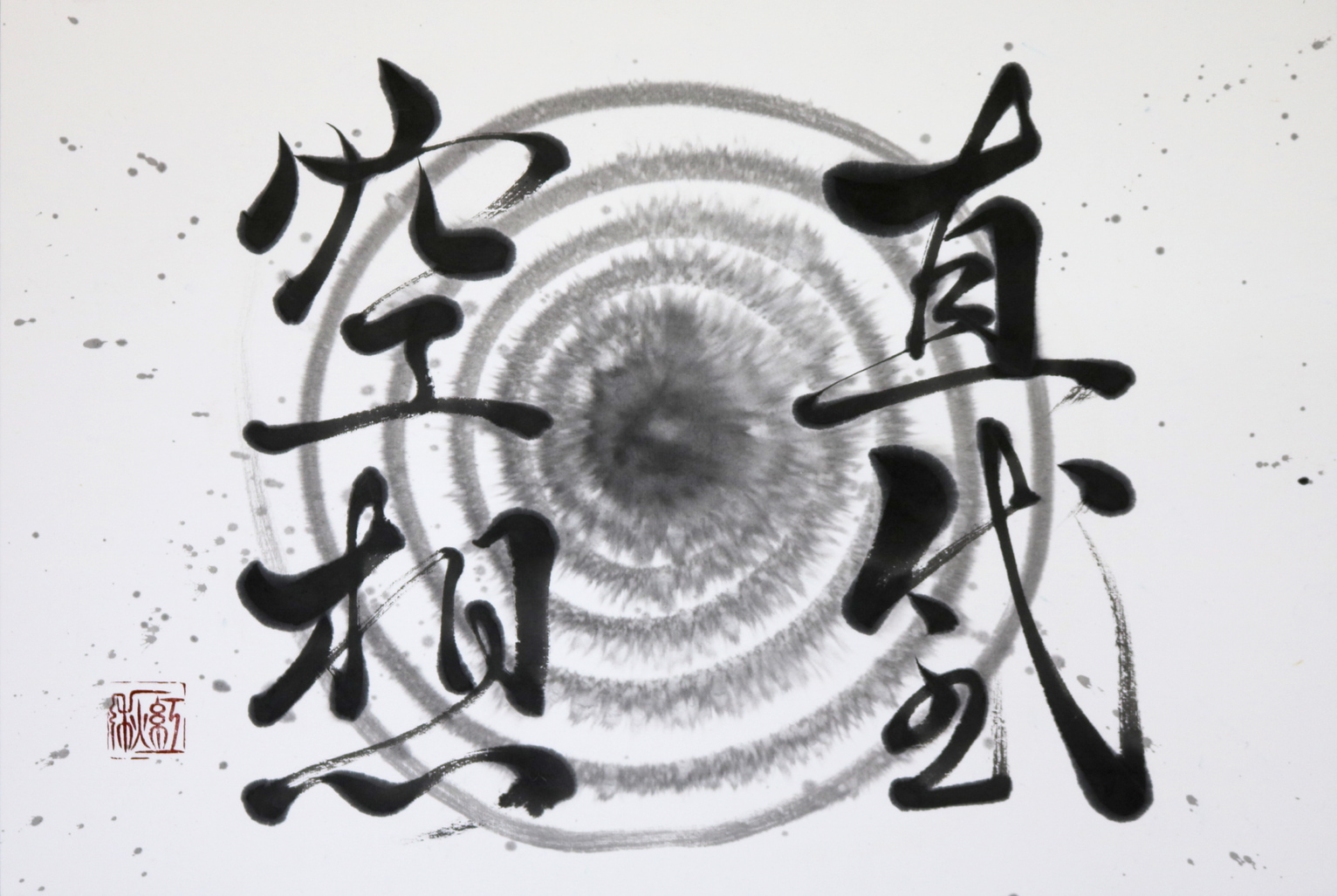
Calligraphy by Koshu, “Chokkan”
The First Brushstrokes
Many Japanese children must learn calligraphy from a young age, but none with quite as much reason and determination as Koshu. Since birth, she has had several illnesses, including losing sight in her left eye due to cancer. That impaired her sense of balance, so to help, Koshu’s mother sent her to a calligraphy school along with her siblings.
At eight years old, she didn’t feel particularly gifted, or even that she liked calligraphy all that much. In fact, her teacher would often showcase her sister’s work to the class while reprimanding Koshu’s work. Despite that, she kept going. Having already learned from her illness that life is short, she made her own mantra by which she lives to this day:
“I will do my best in everything I do, and put in three times the effort of others, before I decide to give up.”
Even at such a young age, she became obsessed with calligraphy. She would stay long after her class was over, only leaving when her teacher told her “It’s getting dark, you need to go home.”
Koshu’s determination overflowed into sports and dance as well. She majored in English at university and started working for a major corporation, often sacrificing sleep and skipping meals in order to keep practicing calligraphy and dance.
By this point, Koshu had reached 3rd dan, just three levels away from shodo mastery. In calligraphy schools, many teachers give their students artist names and it was at this point that she got hers. As a calligraphy sensei, Koshu continues in the same way, giving her students a color-related name when they make it to 3rd dan.
Koshu performed Japanese calligraphy and sumi painting at the National Museum in Georgia for the opening event of “Tokugawa and the masters” hosted by the Japanese Embassy in Georgia.
Getting Rid of the Self to Break Through
To progress to each level in Japanese calligraphy, you must hand in a small selection of perfectly crafted pieces laid out in a specialized book. Koshu not only practiced that small selection, but almost the entire book. Her teacher, however, would not even let her into the house to inspect her work, saying it wasn’t good enough. She hit a roadblock.
Her health worsened and she quit her job and went to live in Miyazaki for a special macrobiotic treatment. There, she made a living working as a yoga instructor. When she returned from Miyazaki, Koshu locked herself at home and cut contact with everyone in order to solely focus on calligraphy.
“If the universe could use my body and brush to create art, what would happen?” she remembers thinking.
Suddenly, she felt different.
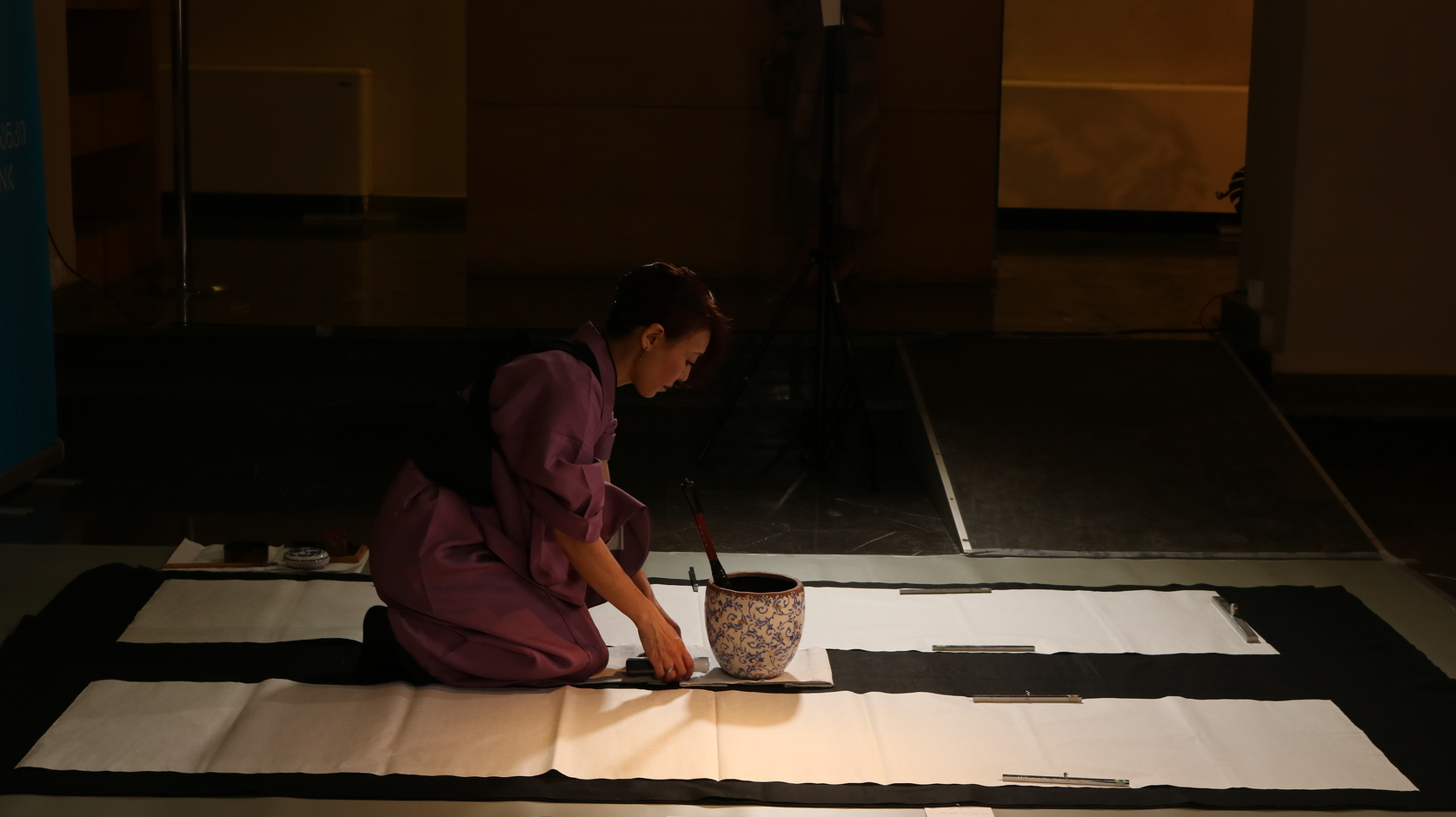
No longer was she doing calligraphy for herself, or for her teacher to be proud of her. Koshu was now letting the universe guide her. She took that artwork to her teacher. He finally let her cross the threshold. It was only then, after letting go of the need for external validation, that she was finally graced with those words she had longed for: “Well done.”
From there, Koshu sprinted towards 6th dan. She was then granted permission to teach calligraphy as a calligraphy master.
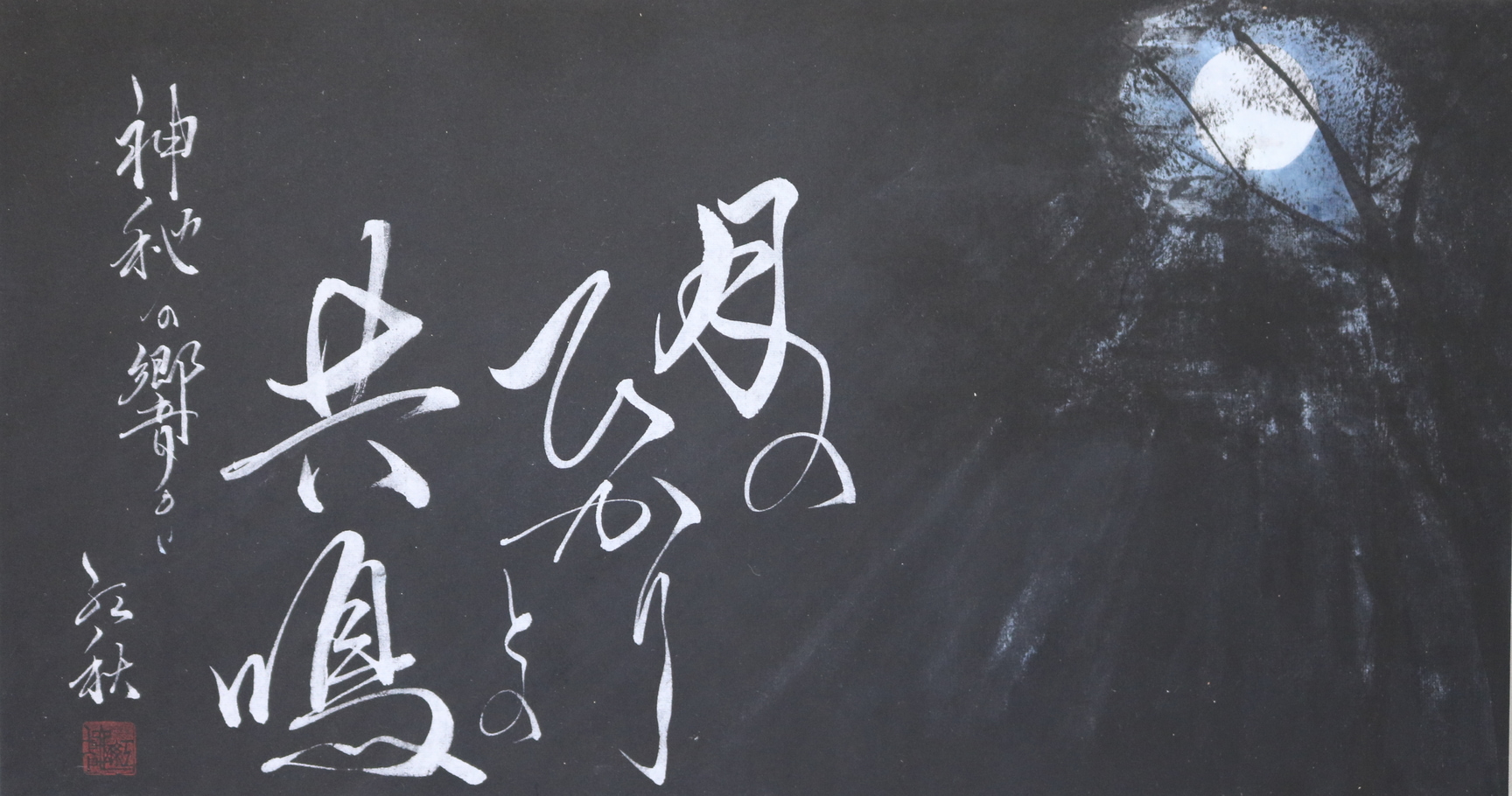
Calligraphy and art by Koshu, “Moon”
The UK Connection
Koshu met her husband while visiting the UK. They moved back to Japan where she opened a school teaching calligraphy and English. Tragically, shortly after that, her husband passed away leaving her with their one-year-old daughter.
The world grew cold and Koshu lost her passion. Even in our online meeting, her grief was palpable. “I couldn’t pick up my brush,” she told me.
Koshu closed her school and moved to the UK to fulfill her husband’s wishes for their daughter to get an English education. She subsequently didn’t do calligraphy for almost two years.
It took a friend’s assertive attitude to break Koshu out of her grief. The friend brought her to an adult education center and said “Here’s a calligraphy teacher. Do you want her to work here?”
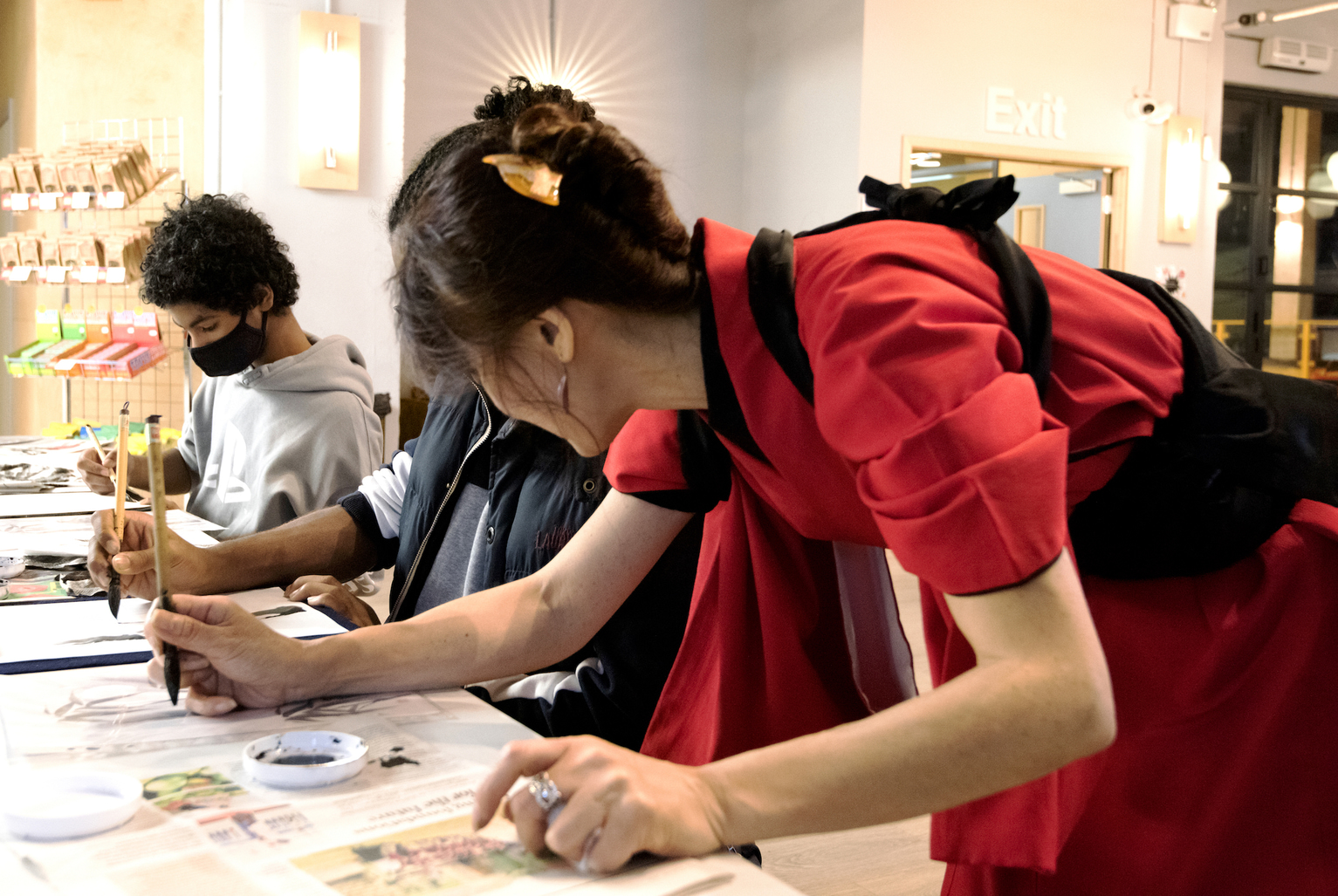
Amazingly, it worked. Koshu taught there for two terms, slowly regaining her passion. It was this newfound “joy in giving” that led her to teach small classes in her own home to English speakers. “At first it was challenging teaching non-Japanese people, but I think I like it more. They look at calligraphy as art, with no preconceptions.”
The challenge of teaching calligraphy to non-native students was no match for Koshu, and nor was the pandemic. Koshu moved her classes online, broadening her student base to include those living abroad. She feels the tough situations life throws at her are a gift and a challenge to make her stronger. That is why she cherishes every student, knowing that everyone has their own story.
She concludes: “If calligraphy is a helpful journey for the student to learn about themselves, that is what’s important.”
To see more of Koshu’s calligraphy work check out her website and Instagram.
Featured and top image courtesy of Domestika, the online learning platform where Koshu gives calligraphy lessons.

